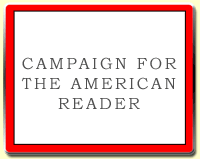Elizabeth Laird was born in New Zealand of Scottish parents, but grew up in London. Before studying French and German at university, she taught at a girls’ school in Malaysia. During her twenties she lived and worked in Ethiopia,

teaching and travelling, and was a disc jockey on a late night music show, broadcasting to Africa and India.
Laird is best known for her fiction for children and young adults. Novels include
Red Sky in the Morning (1988), about a disabled child;
Kiss the Dust (1991), about Kurdish asylum seekers in Iraq;
Secret Friends (1996);
Jay (1997), which has a drug theme; and
Jake’s Tower (2001), in which a boy has to cope with a violent stepfather.
The Garbage King (2003) is set in Addis Ababa, and is about Ethiopian street children.
A Little Piece of Ground (2003) is set in Ramallah, Palestine, from the point of view of boys caught up in the intifada.
Secrets of the Fearless (2006) is a historical adventure story set against the backdrop of Nelson's navy. Laird's latest book,
The Prince Who Walked With Lions, is a historical epic, based on a true story, about an Ethiopian prince who is torn from his mountain home and must build a new life as an "English gentleman."
One of Laird's top ten books "showing teens tackling tough stuff and all their trials and triumphs along the way," as told to the
Guardian:
 The Other Side of Truth by Beverley Naidoo
The Other Side of Truth by Beverley Naidoo
This is a barnstormer of a book (it won the Carnegie Medal) and is imbued with Beverley Naidoo's passion for justice. It describes the experiences of a brother and sister who have to flee Nigeria at a moment's notice when their father is arrested. Abandoned at Victoria Station, they are picked up by the authorities and sent to foster homes. Their attempts to find their uncle, and save their father from a dreadful fate in Nigeria, make a thrilling story.
Read about
the other books on Laird's list.
--Marshal Zeringue
How to Live



















































